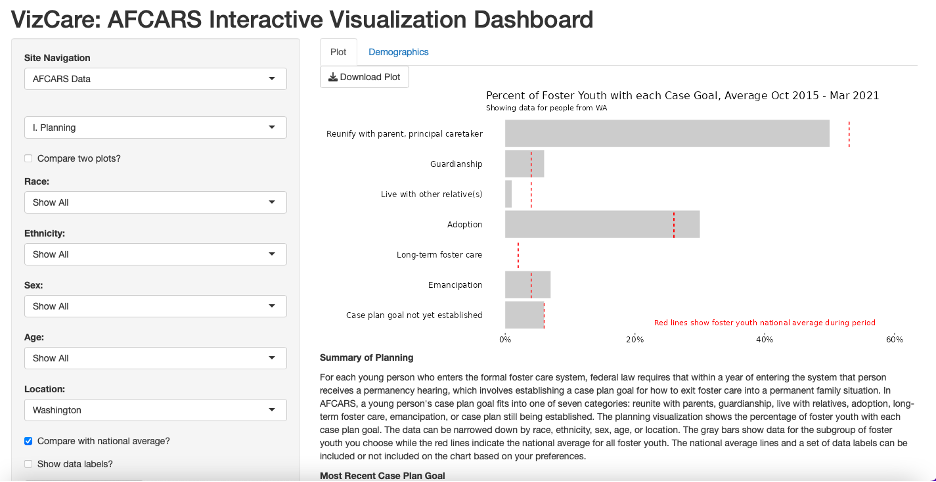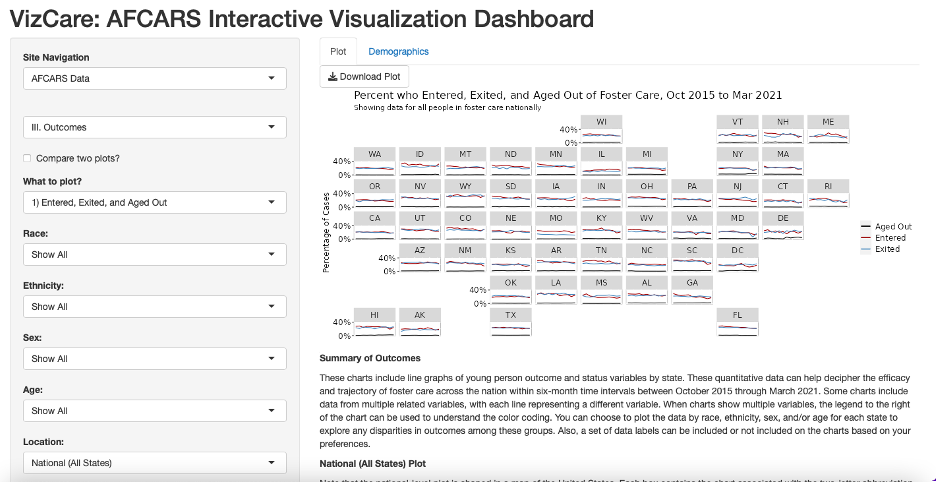Leah Pistorius
July 18, 2024

Photo by Courtney Kirkland on Unsplash
In response to the evolving needs of the child welfare system, UW researchers are advancing access to visualizations of foster care data. John Fowler (HCDE PhD '23) and Professor Mark Zachry developed VizCare, a new tool to increase the use of research in child welfare decision-making.
In the child welfare system, data plays a critical role in informing decisions that impact the lives of children and families. Professionals in this field need access to clear, comprehensive data to make informed decisions and advocate for policy changes. However, interpreting vast amounts of data, including large government datasets and qualitative data from people with lived experience with the foster care system, can be challenging.
HCDE alumnus John Fowler (PhD '23), now a Research Scientist and Engineer in the UW School of Social Work, and HCDE Professor Mark Zachry have developed VizCare, a new visualization tool to support child welfare professionals in making evidence-based decisions and communicating with policymakers.
VizCare was informed by a study with diverse professionals engaged in child welfare work across the United States. The researchers identified specific requirements essential for supporting their work, including the desire for humanized data that reflects the real experiences of individuals within the child welfare system and the need for a user-friendly interface that novices could use.
VizCare allows users to create custom visualizations using data from the Adoption and Foster Care Analysis and Reporting System. To meet the need of interacting with policymakers, users can interact with data related to three dimensions of the foster care system, including planning, funding, and outcomes. Within each section, custom charts can be created to explore disparities in the system based on geography and demographics, such as race and age.
VizCare is an interactive visualization dashboard developed by John Fowler that allows for exploration of foster care data from the Adoption and Foster Care Analysis and Reporting System (AFCARS). Users can customize their own visualizations to explore data related to three dimensions of the foster care system, including Planning, Funding, and Outcomes. Within each section, users can create charts that explore disparities in the system based on geography and demographics like race and age.
VizCare was developed using user-centered design techniques and Fowler and Zachry integrated feedback from potential users at each stage of the design process. After identifying the needs of child welfare professionals, the researchers deployed VizCare for the professionals to test in their work. Study participants found VizCare useful for people with or without data analysis expertise to quickly explore existing data and present it in an accessible way that can help influence research and policy advocacy.
This work builds upon Fowler's previous work developing FosterCommViz, a tool that visualizes data from online conversations by those with experiences in foster care. VizCare integrates FosterCommViz with a validated government dataset into a single web-based system.
Fowler and Zachry will present this work at the upcoming IEEE Professional Communication Society Conference in Pittsburgh, Pennsylvania.
VizCare represents a significant step forward in leveraging data to improve child welfare practices. By providing professionals with easy-to-use visualization tools, they can make more informed decisions and provide better outcomes for children in the welfare system.

